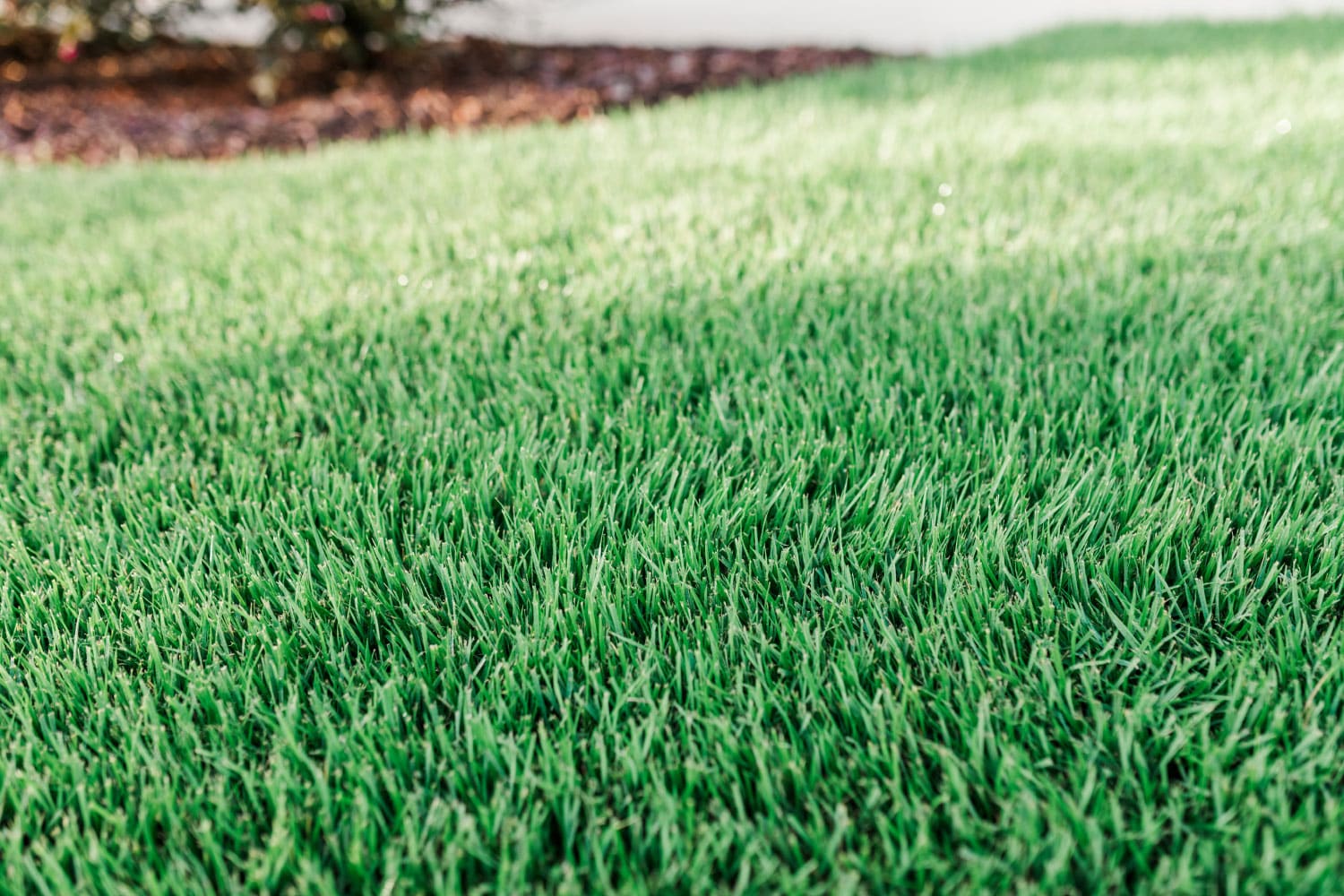Building a new home or business is exciting. Planning, sourcing materials, and lining up specialized labor for certain tasks can challenge those with even the best plans and timelines. When structures are completed in the fall or winter, they still need landscaping, and that often means laying sod as it transitions into dormancy—or is already dormant. Here are some helpful tips for encouraging the health of your sod until spring temperatures arrive.
1. Select the Correct Turf for Your Yard’s Sunlight and Irrigation Amounts
Consider the amount of sunlight for your yard. Did you know the earth actually tilts at different angles during different times of the year? As seasons change, so does the tilt of the earth, meaning the path the sun takes through the sky is much different in winter. Knowing the amount of direct sunlight exposure your yard gets during the spring and summer will guide your choice between varieties of bermuda and zoysia.
Another key consideration in choosing the correct turf is whether or not you have irrigation. In this area, every type of sod needs ample watering. Even the most drought-tolerant turf types require irrigation to thrive in our metro-Atlanta landscapes. When considering which turf type to plant and where to plant it, the planning and installation of a good irrigation system plays a fundamental role in the establishment of sod, even in winter.
2. Don’t Let Your Dormant Sod Dry Out
Sod is simply pieces of turf cut out of a field. They’re mature grass plants with a thin layer of soil and the roots that exist in that cut soil. Watering your sod in winter when it’s freezing seems counterintuitive, but that could be the difference between healthy roots and dead grass. Winter tends to be a relatively damp season in our area, but periods of dryness aren’t unheard of. Well-cared-for, established lawns have deep, dense root systems with lots of stored energy. Newly installed sod does not have those established roots.
During periods of regular rain and warm conditions, simply checking that your sod is moist should be sufficient without any additional irrigation. If we go through a dry spell, making sure your sod stays moist helps protect the shallow root systems as they wait out the warmer months when they can grow again.
3. Keep Your Newly Installed Sod Clean
Fall often means a great deal of dropped materials on your sod: leaves from our hardwood trees, some straw from our pines, and even debris. It’s important to remove these materials from your new sod. Fallen leaves are part of autumn and winter, but when matted, those leaves can create health concerns for your lawn. Dense leaf cover can smother turf and create an environment ideal for fungal infection, especially when wet.
Sod is generally shocked by harvest, and establishment of new sod, even in great conditions, is slowed by that shock. Make sure leaf debris is cleaned to reduce additional challenges your turf may face as it greens up and starts to establish roots in its new home.
4. Avoid Pre-Emergent Weed Control Treatments on New Sod
All of the most common pre-emergent weed control products used in residential lawn care restrict the production of roots in all plants—not just the weeds. Nobody dislikes weeds more than we do. The most common reason a property owner or manager reaches out to us for lawn care is specifically for help with weed control and our expert application of quality pre- and post-emergent weed control products. Our love for healthy turf greatly outweighs our disdain for weeds, however. Encouraging the establishment of quality roots is our first goal when new sod has been installed.
Treatments such as limestone and winter granular fertility are often fine for sod planted on flat surfaces, but it is in the best interest of your sod to avoid pre- and post-emergent weed control until it has had time to establish healthy roots—even if it means tolerating a few weeds for a period of time. A deep, healthy root system is where a lawn finds its strength. Water and nutrients are absorbed by deep, fibrous root hairs, and energy is stored in thick, tuberous rhizomes. Encouraging the development of these structures is fundamental to the long-term success of your yard.
Important Takeaways:
- The long-term success of your yard is based on choosing the correct turf for your particular yard in the first place. Select your turf based on the sunlight available during the growing months and the amount of water it will receive.
- Sod is simply pieces of turf cut out of a field. They’re mature grass plants with a thin layer of soil and the roots that exist in that cut soil. That thin layer of roots needs to stay moist, even in winter. Don’t let your sod dry out.
- Fall often means a great deal of dropped materials on your sod: leaves drop from our hardwood trees, some straw drop from our pines, and even debris. It’s important to remove these materials from your new sod.
- All of the most common pre-emergent weed control products used in residential lawn care restrict the production of roots in all plants—not just the weeds. Avoiding weed control for a period of time while your sod establishes roots is fundamental for long-term success.
- If you have or are planning to have sod installed before winter sets in, reach out to us at Nature’s Turf for guidance with helping your newly installed sod establish strong, healthy roots for a dense, beautiful lawn next spring and for years to come.








